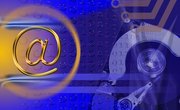It’s hard to deny that computers have taken a prominent role in modern society. From the smartphones in our pockets to the smart devices controlling our appliances at home and everything in between, computer technology is everywhere. It should come as no surprise that the use of computers in education has been steadily increasing and in many ways has revolutionized traditional education. Computers in the classroom have multiple benefits for both students and their teachers.
Purpose of Computers in Education
Computers are one of the most valuable resources in a classroom because they serve so many useful functions. With computers and the internet, students today have a wealth of information at their fingertips that can help them develop their research and communication skills while preparing them for a future career in a workforce that is increasingly reliant on computer technology.
One of the most common applications of computers in education today involves the ongoing use of educational software and programs that facilitate personalized online instruction for students. Programs like iReady use computers to assess students in reading and math. Students then work on interactive reading and math lessons that are designed to target the specific academic needs identified during diagnostic testing. Educational software like this makes it easier to differentiate instruction so that lessons meet each student’s unique learning needs. These tools also provide a wealth of useful data and resources that teachers can use to work with their students in the classroom and maximize learning. Online assessments are more efficient than traditional paper testing because it allows for more immediate feedback and data.
Computers also have an important role beyond primary and secondary education classrooms. Thanks to computers and technological advancements, higher education is now more accessible than ever. Many colleges and universities offer online classes, and some even offer degree programs that can be completed exclusively online. Online classes and online degree programs make it easier for single parents or students with heavy workloads to continue their education from the comfort of their own home and at their own pace.
Benefits of Computers in the Classroom
The benefits of using computers in the classroom goes beyond more efficient assessment and opportunities for online learning. Mobile devices and technologies are an inevitable part of society, but that does not mean that students naturally understand how to use those technologies appropriately. Using computers in the classroom gives teachers an opportunity to teach digital citizenship skills that demonstrate ways to use technology correctly and responsibly.
Computers also help maximize student engagement. Modern students are regularly exposed to technology outside of the classroom. Most use and enjoy smartphones and other mobile devices, which is why they are more likely to engage in the learning process if it involves something to which they are already accustomed and enjoy.
Teacher Use of Computers in the Classroom
Computers have revolutionized the teaching profession in multiple ways. Teachers use computers to record grades, calculate averages, manage attendance and access data on student performance in online programs and assessments. Computers have also made it easier for teachers to vary their instructional delivery. Instead of lecturing at the front of the room for an entire class period, teachers can incorporate technology into their lessons to keep students engaged while appealing to a variety of learning styles. From using computers to create presentations on a topic to showing video clips that complement the lesson at hand, technology helps teachers make the content easier for students to understand.
Disadvantages of Computers in the Education Field
While the benefits of using computers in education are plentiful, it also has some disadvantages. Some worry that computers are distracting because they provide students with temptations like games, videos or chats that can take them off task. It’s true that some students might be lured off task by these tempting features, but luckily there are settings available that can help teachers and parents set restrictions to help minimize distractions.
Another disadvantage of computers in the classroom is over-reliance on technology. Critics argue that spell check and other computer features that automatically correct errors in spelling and punctuation make students too lazy to learn and apply the rules themselves. These features, however, help point out where students went wrong and offer valuable learning opportunities that can help students enhance their understanding of appropriate spelling and punctuation. The benefits of using computers in the classroom outweigh any disadvantages that may accompany it.
Related Articles
References
Writer Bio
Kristina Barroso earned a B.A. in Psychology from Florida International University and works full-time as a classroom teacher in a public school. She teaches middle school English to a wide range of students from struggling readers to advanced and gifted populations. In her spare time, she loves writing articles about education for TheClassroom.com, WorkingMother and other education sites.











